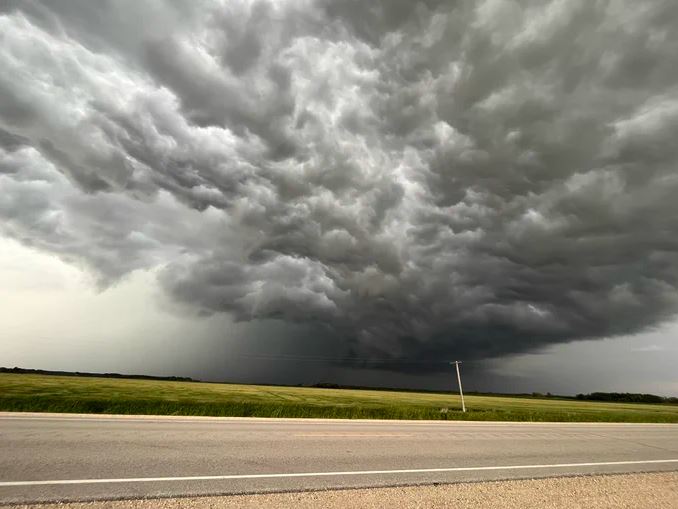How and when Manitobans can view Sunday’s total lunar eclipse
Posted May 14, 2022 7:28 pm.
Last Updated May 14, 2022 7:30 pm.
It’s a phenomenon that only happens once every few years.
On Sunday night, Canadians can witness a beautiful celestial event: a total lunar eclipse.
“The moon turns this beautiful sunset red color, which people have started calling the blood moon,” said Scott Young, a planetarium astronomer with the Manitoba Museum. “And so that’s what we’re looking forward to. And we get to see pretty much the whole event this time around.”
“What’s happening is the moon, as it goes around the Earth, goes into the shadow of the Earth every once in a while. Most of the time we see part of it lit up by the sun, and we’ll see a crescent moon or a full moon. But on Sunday night, it will actually go into the Earth’s shadow.”
Young describes the event as seeing “all of the beautiful sunrises and sunsets around the world at the same time”.
“From Manitoba all the way to the east coast, they basically will see the whole partial and total phases of the eclipse,” added Young. “The folks west of Manitoba, the moon will already be partly eclipsed when it rises for them.”
Scott says people interested in viewing the eclipse should hope for clear skies Sunday to get the best view of the eclipse.
The first phase begins around 9:30pm CT and is expected to last until 1 a.m.
“The total eclipse goes from about 10:30 to nearly midnight and the very central, sort of the darkest part of the eclipse occurs at 11 our time, central time,” said Young.
He says people will be able to see it clearly with the naked eye – so long as it’s clear out – and won’t need a telescope or binoculars.
The Manitoba Museum will be livestreaming the entire event.








